It took months for Nancy Hemenway Barton’s belongings to catch up with her when she moved to Bolivia in 1966. Among the possessions slow in transit were her paints and brushes and other art supplies.
Enchanted by the Bolivian landscape and growing restless from her inability to paint, Barton traveled into the countryside and collected yarns and hand-loomed wools dyed with local wildflowers. She replaced her paint with fabric and her brushes with sewing needles and began making tapestries from lamb’s wool, mohair and alpaca that were full of color, mounded with texture and informed by local traditions and culture. She called her art form “bayetage,” an invented word for her combinations of flower-dyed wool, known as bayeta, and collage.
Born of the necessity of her circumstance, these large-scale wall hangings became much more than a temporary interest while she waited for her supplies. They became the focus of her art for the rest of her life.
“She didn’t have her paints, but that didn’t stop her,” said one of her sons, Brad Barton. “She just said, ‘How can I make this my art for now?’ ”
“She had a terrific vibrancy,” said another son, Bill Barton. “She was driven as an artist.”
This fall, the Art Gallery at the University of New England in Portland tells a wide swath of Barton’s story in the exhibition, “Ahead of Her Time: The Life and Work of Nancy Hemenway Barton.” It’s a retrospective in the sense that it shows a range of her art, including early watercolors and oil paintings, but the exhibition focuses on the textile work that Barton completed over the last 40 years of her life after her trip to Bolivia.
“Ahead of Her Time” helps narrate the story of a committed artist, avowed feminist and dedicated globalist, who left Maine at a young age for a life of adventure but never strayed from her Boothbay roots and always allowed the natural world to guide how she lived her life and practiced her art.
Barton was born Boothbay Harbor in 1920, was educated in Massachusetts and came of age across the globe. She married a Marine who, after World War II, joined the U.S. Foreign Service and decided it was better to find ways to end wars than fight them. She lived a peripatetic life as she moved with her husband to posts in Uruguay, Argentina, Bolivia and elsewhere. She died in Washington, D.C., in 2008.
She missed her family and wrote often of her loneliness and finding solace in her art. When she discovered wools dyed in brilliant colors from local flowers, she said, “This is when loneliness turned into a wonderful adventure.”
Barton was a successful artist by any measure. She had 20 solo exhibitions while she was alive, including major shows at the Art Institute of Chicago, Los Angeles County Museum and the Edinburgh City Art Centre in Scotland. Her work is in the collection of the Metropolitan Museum of Art in New York and public collections across Maine and around the world.
For UNE gallery director Anne Zill, the exhibition is an opportunity to appreciate the work and life of a pioneering female artist and recognize a woman who supported the university and assisted Zill in reopening the gallery, as a member of a its advisory committee. UNE honored Barton with its Deborah Morton Award in 1979, recognizing her civic leadership.
“She was an absolute force of nature,” said Zill, who worked closely with Barton’s sons, Bill, Brad and Rick, to assemble the exhibition.
In conjunction with the exhibition at UNE, art institutions in Maine and Massachusetts are collaborating on a Barton art trail. In Portland, her work also is hanging at the Gulf of Maine Research Institute, the Waxman Library at Maine College of Art and the Portland Museum of Art. Bates College in Lewiston and the Farnsworth Art Museum in Rockland also are showing her work, as is the Maine Fibertarts gallery in Topsham.
In Massachusetts, her alma mater, Wheaton College, has put an exhibition together, as well.
Bill Barton said he never remembered a time when his mother wasn’t working on her art. She always had a studio and always made time for her creative pursuits. As her work evolved and grew larger and three-dimensional in scale, her needs became bigger, including the need for larger studios. He liked being with his mother in the studio, which was open to a loft above, so he could look down on her while she spread her fabric over a pingpong table.
She never had an agent and arranged all of her exhibitions herself, he said.
She even arranged the exhibition at UNE, in a way. Many years ago, Barton diagrammed the gallery on a large piece of cardboard and indicated how she thought her art should be installed. The show she envisioned didn’t happen during her lifetime, but Zill and the Barton boys used her guide when arranging “Ahead of Her Time,” doing their best to honor Barton’s long-ago vision for how the exhibition might be laid out.
They have included several examples of her early two-dimensional work, as well as sketchbooks and pages of poetry that she wrote, but have dedicated most of the gallery’s wall space to her large-scale fabric hangings. With her work, Barton attempted to honor and reflect the natural world. Her work from South America was inspired by the color tones of the earth and flowers. When she worked in Maine, her textiles suggested the rigidity of the rocks, the movement of water and the silky serenity of fresh snow.
She often exhibited her textiles outdoors in all seasons and made art that responded to light, space and movement, Zill said.
Visitors to the gallery at UNE will see a teepee when they first enter the gallery, one of three that Barton made in the early 1990s in tribute to nomadic Indians, who decorated their structures with images of objects important to them: bison, deer, fish. Using mohair and wool, Barton decorated her teepee with “nature at its grandest,” she wrote: waterfalls, blizzards and clouds. She sent one of her teepees to China, where it was damaged during the Tienanmen Square riots.
As she worked with Barton’s sons to install the exhibition, Zill felt exhilaration. Barton’s work felt sensual to her touch and pleasing to her eyes. “This exhibition expands our sense of the infinite capacity of art to enchant us,” she said.
Staff Writer Bob Keyes can be contacted at 791-6457 or at:
bkeyes@pressherald.com
Twitter: pphbkeyes
Send questions/comments to the editors.


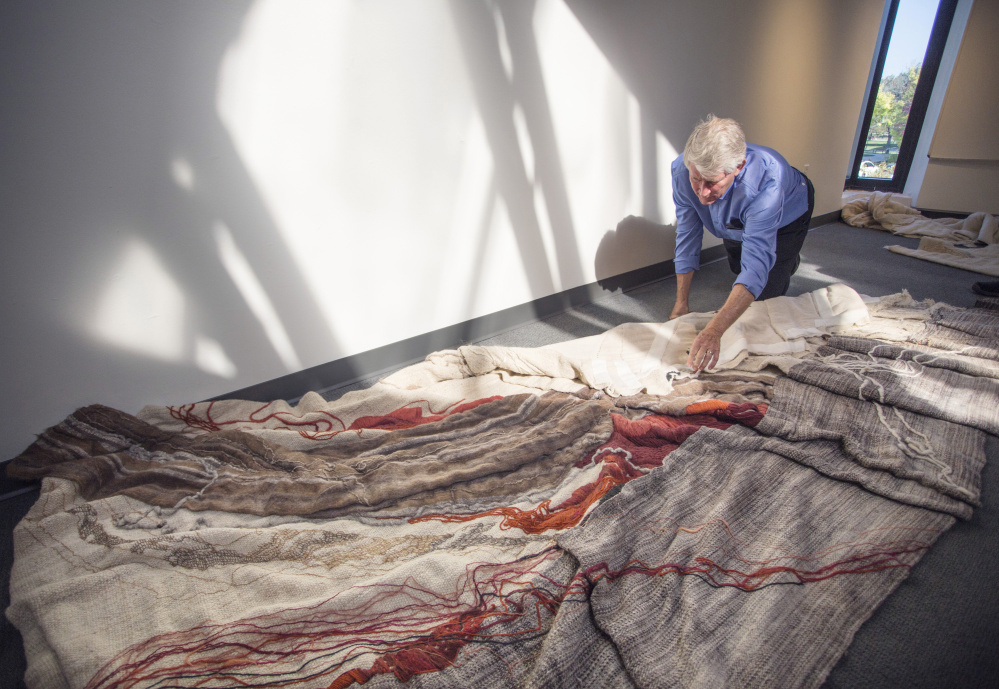
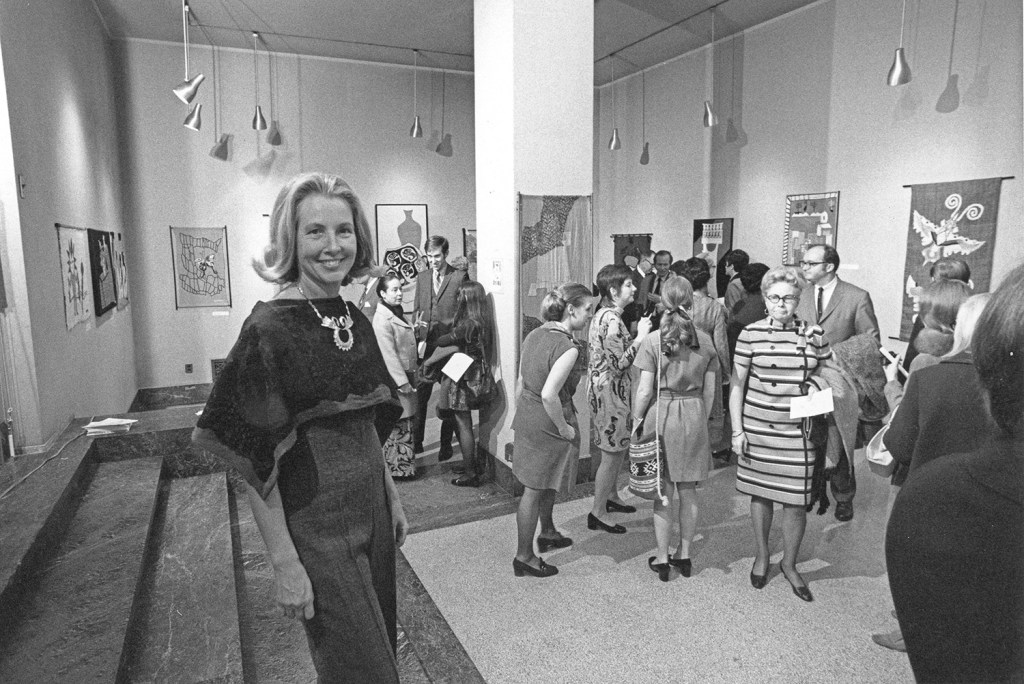
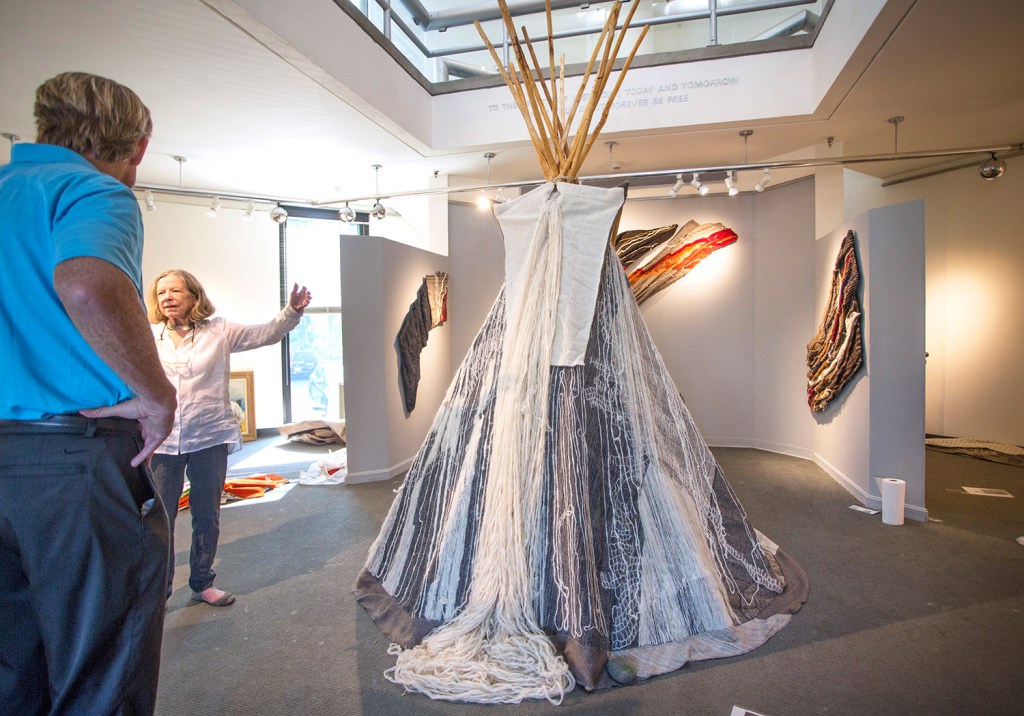
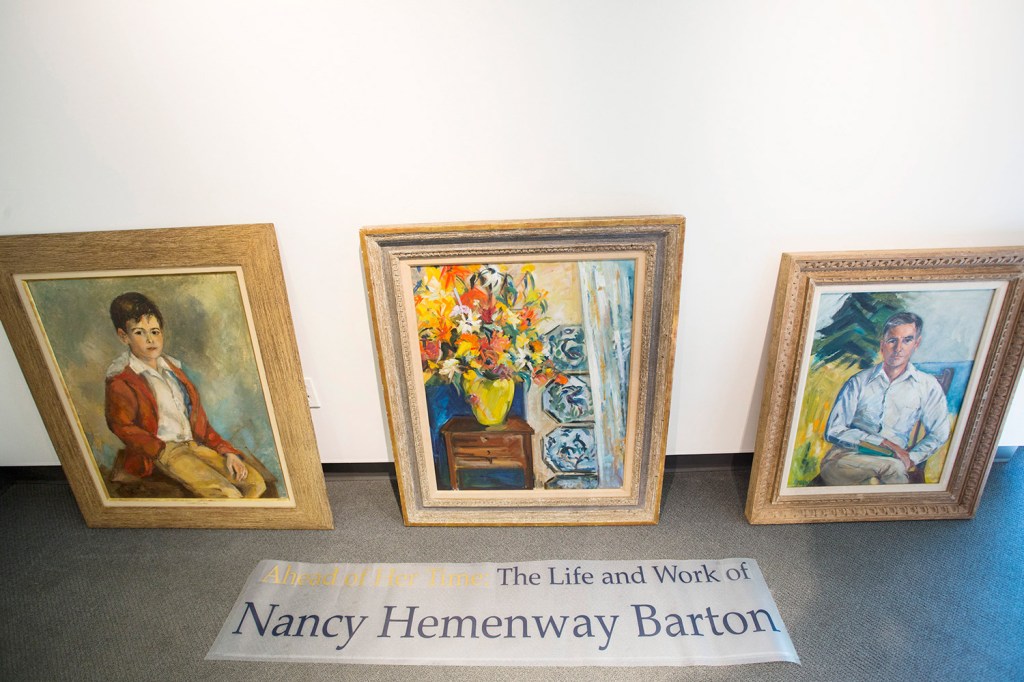
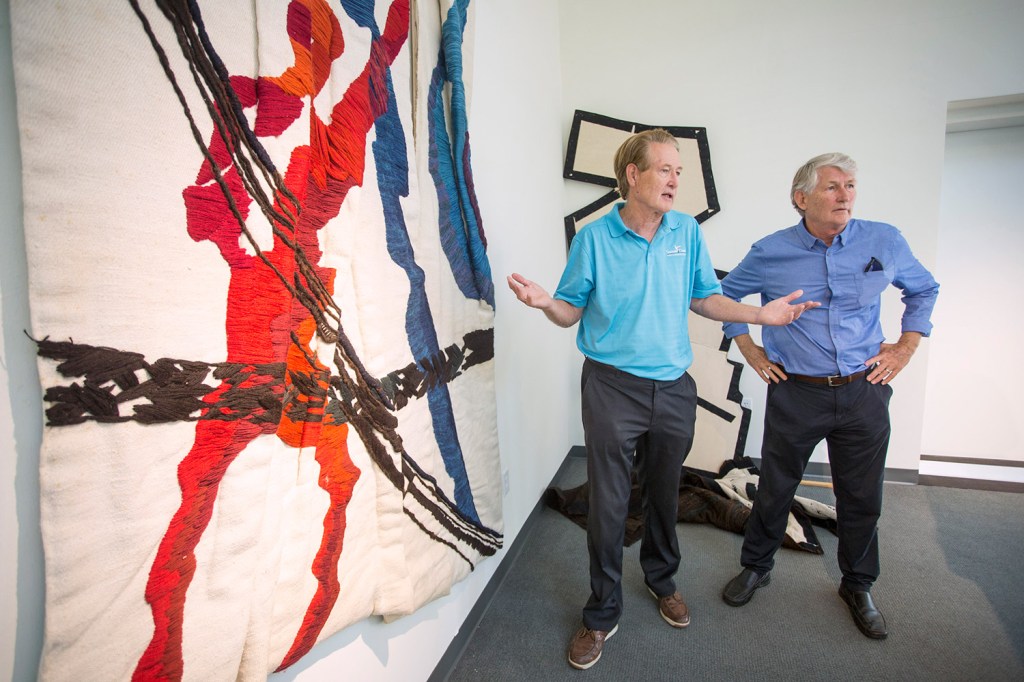
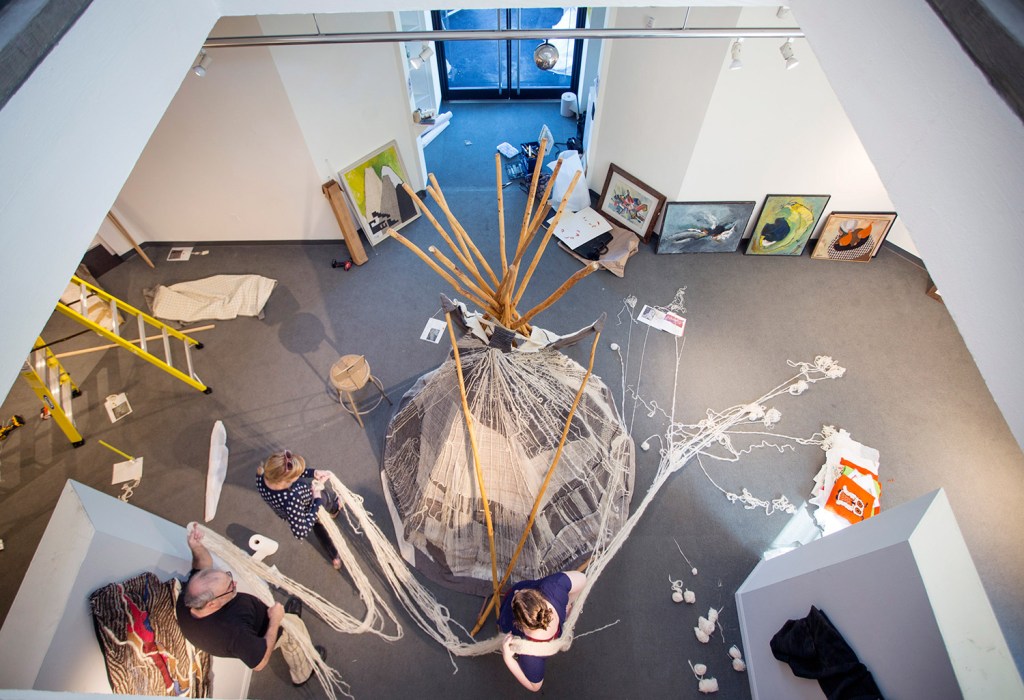
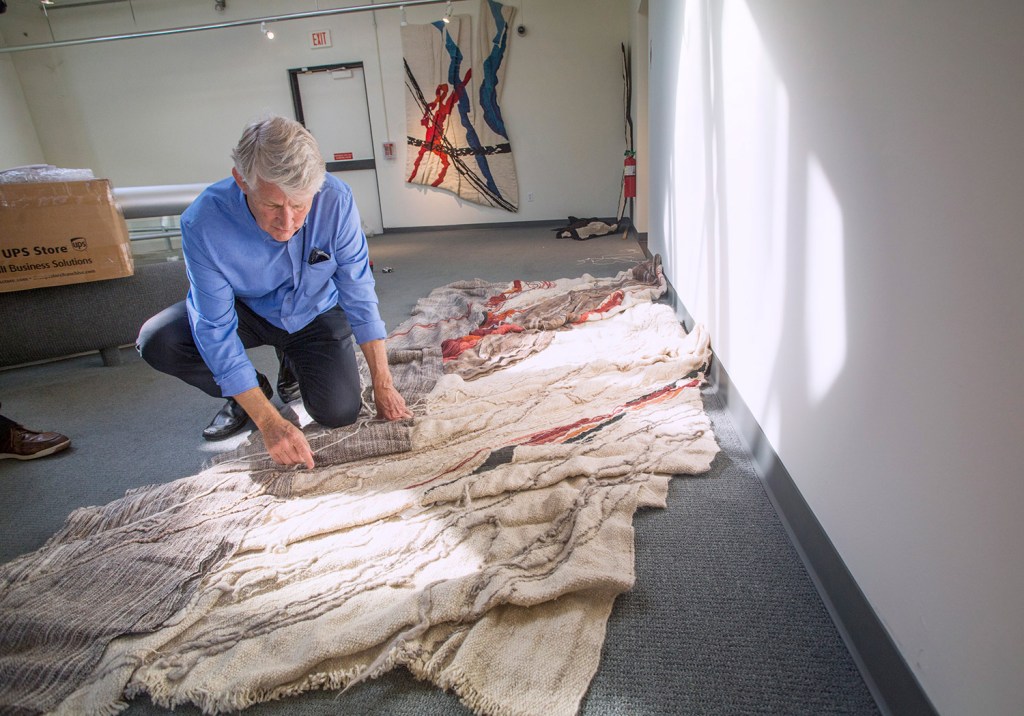

Success. Please wait for the page to reload. If the page does not reload within 5 seconds, please refresh the page.
Enter your email and password to access comments.
Hi, to comment on stories you must . This profile is in addition to your subscription and website login.
Already have a commenting profile? .
Invalid username/password.
Please check your email to confirm and complete your registration.
Only subscribers are eligible to post comments. Please subscribe or login first for digital access. Here’s why.
Use the form below to reset your password. When you've submitted your account email, we will send an email with a reset code.